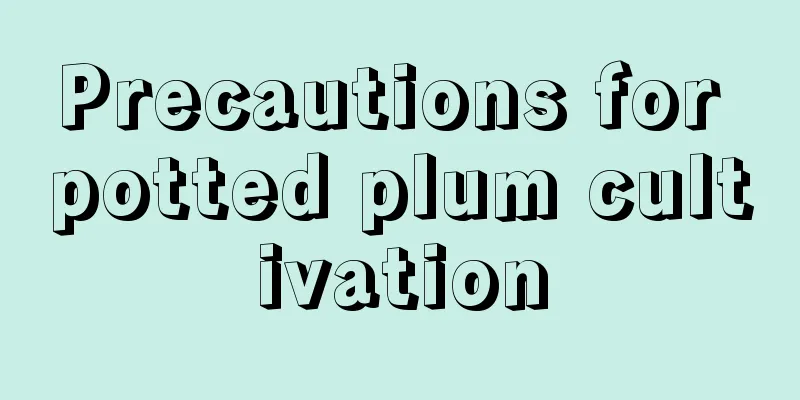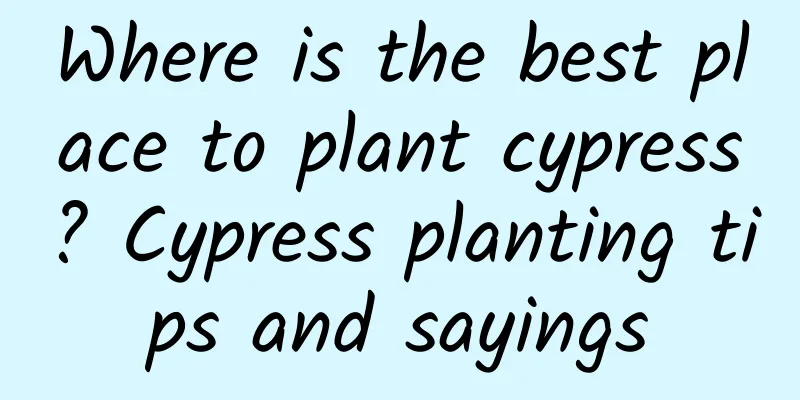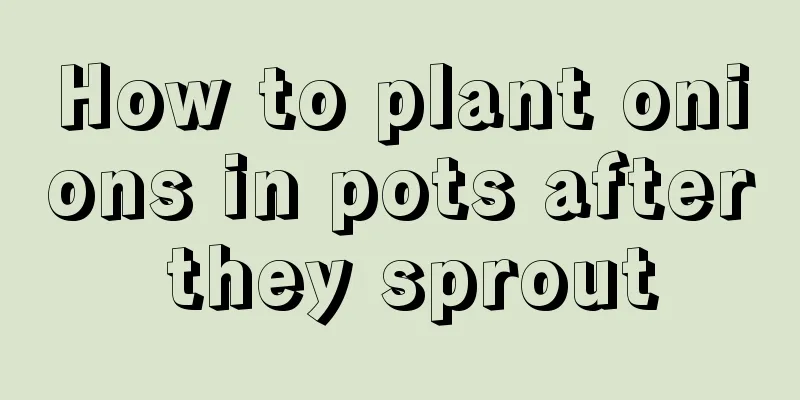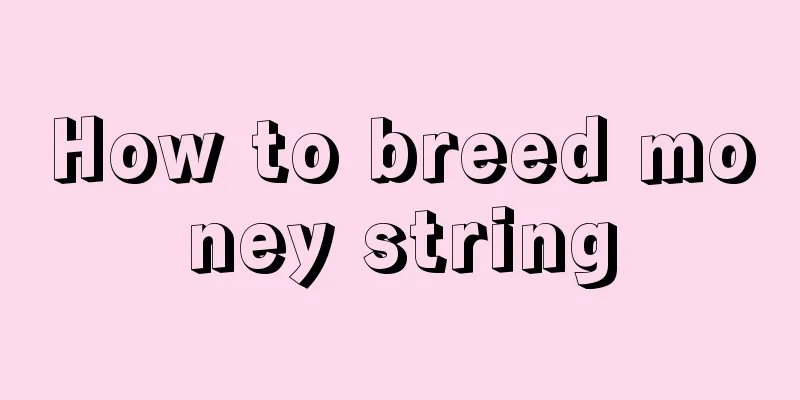Precautions for potted plum cultivation

Notes on pots and soilIt is best to use a clay pot or earthenware pot with good air permeability for planting plum blossoms in a pot. A purple clay pot is also acceptable. Place a layer of crushed charcoal or crushed hard plastic foam blocks at the bottom of the pot. The best substrate is fertile light clay soil. You can mix old mountain mud, pond mud and garden topsoil as culture soil. When planting, add some bone meal and nitrogen, phosphorus and potassium compound fertilizer into the soil as base fertilizer. Planting should be shallow without exposing the roots. Deep planting will not make it easy to bloom. After planting, place it in semi-shade, water it thoroughly once , and switch to normal management after 10 days. Repot and change the soil once every 2 to 3 years after flowering . Watering precautionsPlum blossoms like moisture and are afraid of waterlogging, so watering should be done at the right time and in the right amount. It is better to keep the soil in the pot slightly moist during the flowering period in winter and early spring. Water it thoroughly once after all the flowers have withered . Do not water it again unless the soil is dry. Spray water on the branches and leaves and the nearby ground often in the evening. During the rainy season, water should be strictly controlled. Water should be applied only when the edges of old leaves curl slightly and young branches wilt slightly. Repeat this several times to force new shoots to stop growing, which is conducive to the differentiation of flower buds . When the dog days come, drain water and prevent waterlogging on rainy days. Water once in the morning on sunny days and again in the evening if the soil is dry to prevent dehydration and leaf loss due to over-drying . After September, gradually reduce the amount of watering and water once in the afternoon every 1 to 2 days . In October , flower buds begin to sprout into buds and the leaves have fallen. The amount of water required is not large. Water again when the soil is dry. The soil in the pot can be slightly dry and slightly moist. Precautions for fertilizationPlum blossoms like fertilizer and are also tolerant to poor barrenness. No fertilizer is applied during the flowering period. After the flowers fade, apply nitrogen, phosphorus and potassium compound fertilizer once to promote its rejuvenation. When the new shoots are 3 to 5 cm long, no fertilizer is applied if the growth is good. If the growth is poor, apply nitrogen, phosphorus and potassium compound fertilizer once . No fertilizer is applied when the new shoots grow to about 18 cm. In late June and early July , spray once with 0.2% potassium dihydrogen phosphate solution to promote flower bud differentiation. After the leaves fall and buds appear in late autumn, apply nitrogen, phosphorus and potassium compound fertilizer or 0.2% potassium dihydrogen phosphate solution once to promote the development and opening of flower buds. Light and temperature considerationsPlum blossoms are positive plants and should be placed in a sunny and well-ventilated place, but avoid being placed in a drafty place. It likes warmth but is cold-resistant. It needs low temperature stimulation in winter to bloom and leaf luxuriantly. In places where the lowest temperature in winter is above -12 ℃, it does not need to be brought indoors for the winter and can be placed in a windproof and sunny place. If you want it to bloom during the Spring Festival, move it to a low-temperature chamber of 5~10 ℃ 20 days before the festival, and place it on a south-facing or west-facing windowsill with plenty of sunlight. After flowering, move it to a place of 0~5 ℃. It can bloom for 1 month. If the temperature is too high, it will wither early. Pruning considerationsPlum blossoms have strong sprouting and branching abilities and are resistant to pruning, so old trees are easy to rejuvenate. After flowering, the branches that have bloomed should be pruned back, leaving only 2 to 3 buds at the base. Weak branches, diseased and dead branches should all be pruned, and one crossing or overlapping branch should be cut off. Overcrowded areas should be thinned out. When the new shoots grow to 20 cm, pinch them off to control their growth and concentrate nutrients on flower bud differentiation. If the new shoots are too long, the flowers will be sparse. Through pruning, not only the plant shape is beautiful, but also ventilation and light transmission are good, making it less susceptible to diseases and pests. Precautions for pests and diseasesWhen the temperature is high and the drought is severe in mid-to-late June , anthracnose may occur to plum blossoms. In July , when the temperature is high, the humidity is high and the ventilation is poor, powdery mildew may occur. Both diseases can be prevented by paying attention to ventilation and light. If diseased branches and leaves are found, cut them off and burn them, and spray them with thiophanate-methyl or carbendazim. The main insect pest of plum blossoms is aphids, which can be killed by spraying 1500 times solution of 80% DDT emulsifiable concentrate or burying furadan in the soil to kill the aphids on the plants. It is worth noting that plum blossoms are allergic to phosphorus-containing pesticides and should avoid using such pesticides. It has poor resistance to toxic gases such as sulfur dioxide, and grows poorly or may even die in areas with severe air pollution. |
<<: How to prune plum blossoms
>>: The secret to making plum blossoms bloom all year round
Recommend
The correct way to water flowers with egg water. Key points for watering flowers with egg water
Eggs are rich in protein, which can provide energ...
Can Longsha Gem be potted?
Can Lonza Gem be potted? Rosa can be grown in pot...
How and when to plant motherwort
The suitable planting time of motherwort Early-ma...
Will the Christmas cactus continue to grow after the flower buds fall off?
1. Dropping buds will lead to growth There are ma...
Cultivation methods and precautions of oil painting wedding spider plants
The Oil Painting Wedding Chlorophytum is particul...
Pests and control methods of Eustoma
Pests of Eustoma: Aphids symptom Aphids are the f...
Common symptoms and solutions for Ruogeshi
If the leaves of the poem keep falling symptom Th...
Raspberry's growing environment and growing conditions
Raspberry growing environment and conditions Rasp...
How to eat wolfberry, what to add to wolfberry to nourish the kidney and strengthen yang
1. How to eat 1. Stir-frying and cooking porridge...
What is the cactus plant and what are its uses?
1. What kind of plant is cactus? Cactus is a succ...
How to grow and maintain Cixi succulent plants and what to pay attention to
Cixi succulent belongs to the genus Echeveria, an...
Can I keep the cymbidium at home?
Is the chypre suitable for growing at home? There...
These 9 kinds of flowers look ugly if they have single petals, but become more beautiful than fairies once they have double petals!
Geranium Geraniums are probably familiar to all f...
How to deal with and prevent succulent plants from growing too long
1. How to deal with succulent plants after they g...
Can ammonium bicarbonate be used as fertilizer? The correct way to use it
Ammonium bicarbonate is a white crystal, also kno...









